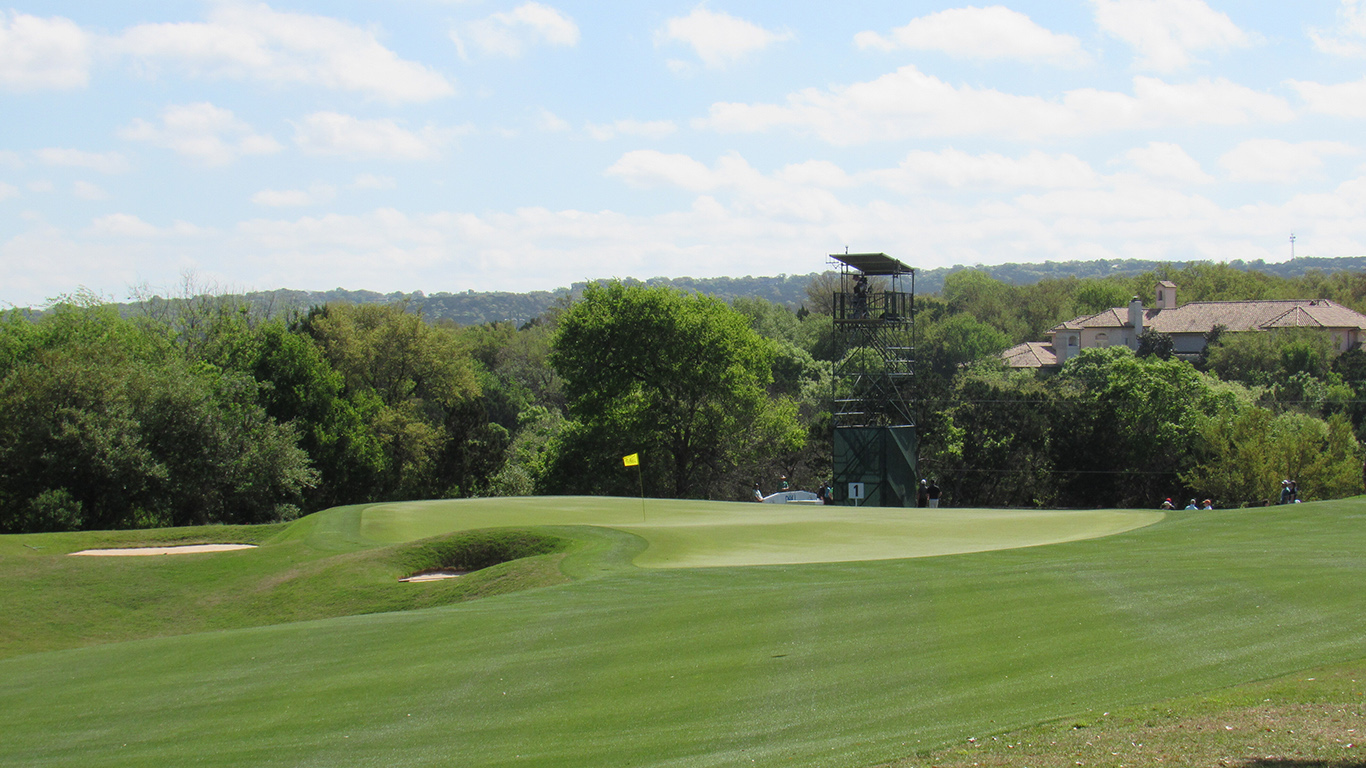“It was liberating.” These were the first words out of Gil Hanse’s mouth when I asked him about building Ohoopee Match Club. As its name suggests, Ohoopee is a course where only match play is allowed. Hanse explained that the prohibition of stroke play allowed him to build more daring, exciting greens because he knew players wouldn’t be writing their scores down. This conversation was illuminating for me. It revealed just how much the notion of fairness in stroke play limits the freedom of the modern golf course architect.
I am reminded of Hanse’s words every year at the WGC Match Play, hosted by the Pete Dye-designed Austin Country Club. Austin is one of my favorite courses to watch the pros play. It affords all types of players a chance to succeed, as proven by a varied winner list that ranges from Dustin Johnson and Bubba Watson to Kevin Kisner. The course rewards excellent play; it penalizes poor strategy and execution, and it has boldly contoured greens that separate great from good shots and good from poor shots. It’s also quirky and a little crazy, full of humps and hollows that create a sense of unpredictability.

The first green at Austin Country Club. Photo: Andy Johnson
The first year I covered the Match Play, I spoke with a PGA Tour executive who remarked that a stroke-play event could never happen at Austin Country Club because players would find it overly severe and unfair. So I have to wonder: what would the world of golf course design look like if match play were still the predominant form of competitive golf?
The shift away from match play coincided with the rise of professional golf in America after World War II. In the early decades of the 20th century, the most revered player in the game was an amateur, Bobby Jones, who built a large part of his legacy with wins in match-play tournaments. But as golf entered an era in which professionals like Byron Nelson and Ben Hogan dominated, match play faded and stroke play rose.
Simultaneously, the philosophy of golf course design shifted, becoming more centered on the pursuit of fairness. The most influential architects between the 1950s and 1990s wanted their courses to produce predictable outcomes for shots: hit it straight and you’re in the fairway with a flat lie; hit it offline and you’re in a bunker or the rough. Elite golfers like this type of design because it’s “right there in front of you”—no secrets, no surprises, no unexpected bounces. Fair. But it can also be quite boring. Pete Dye was one of the few architects of his generation who didn’t flinch when his courses were called unfair.
Compare this style of architecture to that of the “Golden Age” in America (roughly, the 1910s through the 1930s), when match play reigned. The best courses built in this era allowed for different routes of play, were full of undulations that could lead to lucky and unlucky bounces, and had what are now considered severe greens. Often when I walk off a green at an older course, I find myself saying, “Wow, they don’t build them like that anymore.”
And they don’t. That’s partly because modern green speeds have made Golden Age-style contouring less functional, but I think it’s also because today’s architects have to design for score-centric stroke play. Which is why I always go back to what Gil Hanse told me about the liberating feeling of building a course for match play. Most of the time, stroke play looms as a kind of invisible constraint, creating an anxiety that wild (or, from another perspective, fun) greens will be lambasted for unfairness.
Would the same greens be vulnerable to this criticism if match play were the most common form of recreational and competitive golf? I’d venture to say no.


 by
by 
